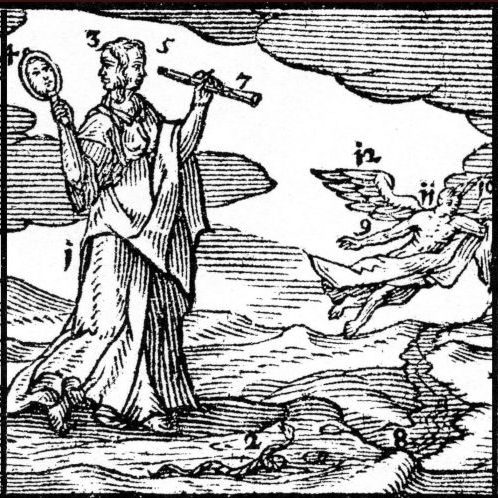‘Don’t come home this year’ is a short video about Romanian migrants returning home from Italy during the Covid-19 pandemic. The video uses viral live streamed footage of returnees showing themselves stuck in transit on the 17th of March 2020 at the land border between Austria and Hungary, the Nikelsdorf-Hegyeshalom border crossing. Juxtaposing this footage with reaction videos from the diaspora who remained abroad, and from Romanians at home, the video unfolds as a virtual dialogue that shows how the pandemic engendered a field of contention surrounding the identity of these migrant workers, as diasporic community and as medium of virus transmission. The video also captures the way in which new media technology and aesthetics are embedded in everyday life.
The migrants returning home used their smartphones to transform themselves into citizen camera-witnesses.
I was impressed by how the migrants returning home used their smartphones to transform themselves into citizen camera-witnesses, a term used by Andén-Papadopoulos (2014, 754) to describe ‘camera-wielding political activists and dissidents who put their lives at risk to produce incontrovertible public testimony to unjust and disastrous developments around the world, in a critical bid to mobilize global solidarity through the affective power of the visual.’
I started collecting videos made at the border on the 17th of March which were becoming viral both on Facebook and on YouTube. Besides these videos, I started collecting also reaction videos that were made prior or in the aftermath of this event. Before the 17th of March viral videos of returning Romanian migrants sitting in long queues at the border between Hungary and Romania, at the airports, being escorted into quarantine, or in quarantine were already circulating online, together with reaction videos. I recontextualized some of the latter to appear as direct reactions to the 17th of March event because this event, around which the narrative arc of the video is constructed, allowed me to bring in and compress into a single video dialogic footage that would otherwise be temporally and spatially dispersed online. It can be seen as what Jaimie Baron (2015) calls productive misuse of found footage.
I embodied the role user-channels have in re-posting, and thus disseminate, footage that ends up becoming viral, retaining the logic of internet viral transmission.
One of the difficulties encountered was in tracking the original source of these videos. Many of the videos have been downloaded several times and re-posted by Facebook or YouTube users who act as informal channels for Romanian viral video content. This spiral of re-posting made it hard to identify the exact authors of this footage, the dates when these videos were made and, except for the footage shot at the border, hard to identify the exact location where the footage was taken. Related to this was also the difficulty of getting consent for using the footage. In the end I chose not to ask consent from the users that made the footage available online and instead opted for the fair use of the videos (Smith Ekstrand and Silver 2014) . I did so because the videos were created with the explicit intent of being shared as much as possible on social media, ‘to reach Mr. Iohannis in Bucharest’ as one content creator says. In this manner I embodied the role user-channels have in re-posting, and thus disseminate, footage that ends up becoming viral, retaining the logic of internet viral transmission. Moreover, I believe that in the editing process, although recontextualizations were made, the intent of the video creators was not altered, but rather enhanced its dialogism by constructing a conversation space using the aesthetics of online video chatting apps.
In the editing process, although recontextualizations were made, the intent of the video creators was not altered, but rather enhanced its dialogism by constructing a conversation space using the aesthetics of online video chatting apps
Although I cataloged the videos based on the original user source, social media platform and date of publication, I organized the material during editing following a set of topics that have defined the debates about the Romanian diaspora in the media and everyday life. Thus, the video focuses on attempts at defining the diaspora (Beciu 2012, Trandafoiu 2013), the social categories that constitute it (Cingolani 2016, Moroșanu 2012), and its political (Bucur 2019, Burean 2011, Gheorghita 2011, Gherasim-Proca 2014) and economic agency (Ban 2012, Mădroane 2016). At the same time, the video creators make use of symbols such as ‘the queue’, representing in Romania the state’s opression or disregard of its constituent population since late socialism (Câmpeanu 1994), or ‘smashing a TV’, a trope frequently used in cinema and TV productions, associated with rage against the manipulating power of the medium, but repurposed into an international viral video trend expressing outrage at mainstream media manipulation regarding the existence of the virus or its actual source (as seen most notably in the UK and Australia).
The edit creates a polyphonic narrative by overlapping the different footage so as to complement each other and give the sense of a single homogenous narrative. I use (this) visual grammar to portray (…) multiple, opposing narratives of a shared experience, (…) akin to how online video chats unfold.
My inspiration for the video’s aesthetic came from Natalie Bookchin’s video artwork Testament (2009), whose form resembles that of online chat apps everyone has become familiar to since the beginning of the pandemic. In this work she uses online vlogs that she groups according to different topics. Initially conceived as a multi-channel installation, she edited the different footage into one single video that shows the shared experience of losing a job, being on anti-depression medication and trying to come out. The edit creates a polyphonic narrative by overlapping the different footage so as to complement each other and give the sense of a single homogenous narrative. Unlike Bookchin, I use her visual grammar to portray not a single narrative, but multiple, opposing narratives of a shared experience, more akin to how online video chats unfold. It is the divergence of the multiple voices embodied in this dialogic footage which I bring together that I believe ends up defining the collective shared experience of the Romanian diaspora trying to get back home during the Covid-19 pandemic.
References
Andén-Papadopoulos, Kari. 2014. ‘Citizen camera-witnessing embodied political dissent in the age of ‘mediated mass self-communication’’. New Media & Society. 16.
Ban, Cornel. 2012. ‘Economic Transnationalism and its Ambiguities. The Case of Romanian Migration to Italy’. International Migration (50)6:129-149.
Baron, Jaimie. 2015. ‘The Ethics of Appropriation:‘Misusing’the Found Document in Suitcase of Love and Shame and A Film Unfinished’. In Daniel Marcus and Selmin Karra eds. Contemporary Documentary. Routledge, pp. 156-170.
Beciu, Camelia. 2012. ‘Diaspora și experiența transnațională. Practici de mediatizare în presa românească.’[The Diaspora and The Transnational Experience. Media Coverage Practices in The Romanian Media]. Revista Română de Sociologie (23)1-2: 49-66.
Bucur, Maria. 2019. ‘The Romanian 2019 presidential elections. Populism on the retreat’. Public Seminar, December 5th 2019, https://publicseminar.org/essays/the-romanian-2019-presidential-elections/
Burean Toma. 2011. ‘Political Participation by the Romanian Diaspora’. In Paul E. Sum and Ronald F. King eds. Romania under Băsescu: Aspirations, Achievements, and Frustrations during His First Presidential Term, Lanham: Lexington Books, pp. 83-105.
Câmpeanu, Pavel. 1994. România: coada pentru hrană, un mod de viață.[Romania: queuing for food, a way of life] București: Editura Litera.
Cingolani Pietro. 2015. ‘“Good Romanian Gypsy Looking for a Home”. Housing Policies and Politics of Identity among Roma and non-Roma in Turin, Italy’. Revue Européenne des Migrations Internationales 32 (1): 59-78.
Cretan, Remus and Duncan Light. 2020. ‘COVID-19 in Romania: transnational labor, geopolitics, and the Roma ‘outsiders’’. Eurasian Geography and Economics
Gheorghita, Andrei. 2011. ‘Vote Transfers, Thwarted Voters and Newcomers in the 2009 Presidential Runoff in Romania’. SOCIAL CHANGE REVIEW 9 (2).
Gherasim-Proca, Ovidiu. 2015. ‘Alegerile prezidențiale din România (2-16 noiembrie 2014). Hipermobilizare și eșec administrativ’.[Presidential elections in Romania 2-16 november 2014. Hyper-mobilization and administrative failure]. Analele Ştiinţifice ale Universităţii ‘Alexandru Ioan Cuza’ din Iaşi. Ştiinţe politice 10:103 – 117.
Mădroane, Irina Diana. 2016. The media construction of remittances and transnational social ties: migrant-non-migrant relationships in the Romanian press. Identities. Global studies in Culture and Power 23(2):228-246.
Moroşanu, Laura. 2013. ‘‘‘We all eat the same bread’: the roots and limits of cosmopolitan bridging ties developed by Romanians in London’. Ethnic and Racial Studies. (36)12: 2160-2181.
Smith Ekstrand, Victoria and Derigan Silver. 2014. ‘Remixing, Reposting, and Reblogging: Digital Media, Theories of the Image, and Copyright Law’. Visual Communication Quarterly (21)2: 96-105.
Trandafoiu, Ruxandra. 2013. Diaspora Online. Identity Politics and Romanian Migrants. Berghahn Books.
Featured Image: Prudentia, found on Wikipedia.





